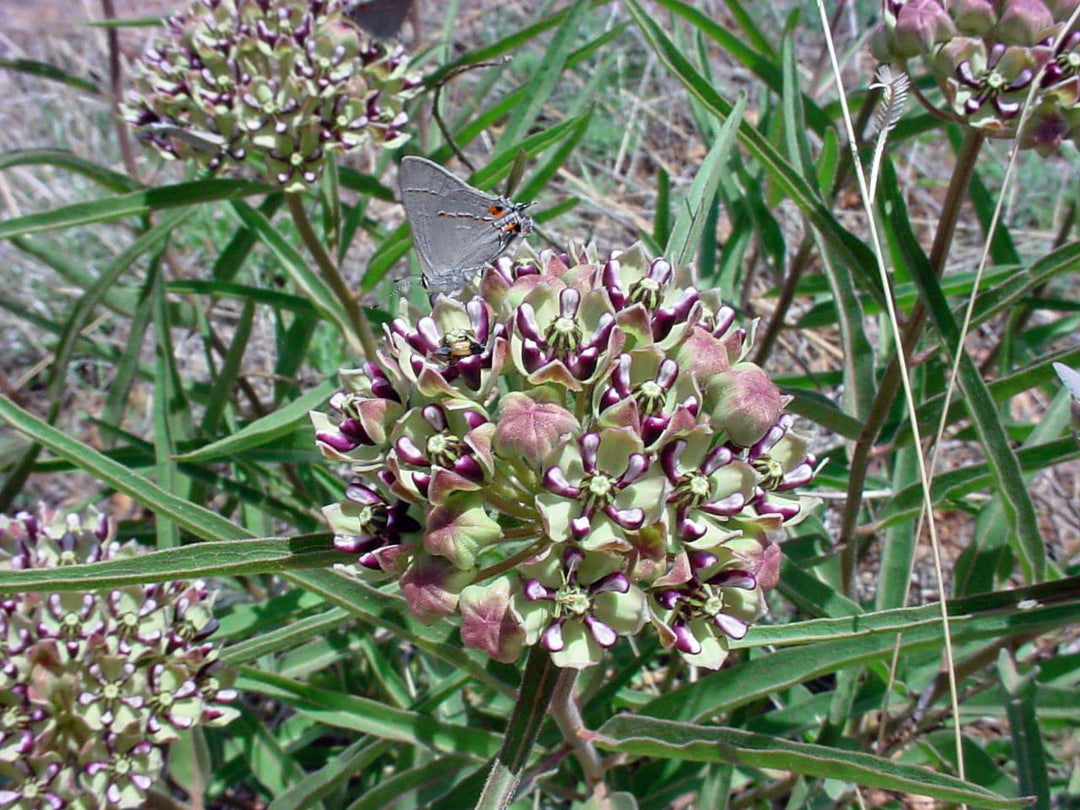Antelope Horns
- Shipping Available
- In stock, ready to ship
- Backordered, shipping soon
Asclepias asperula
When fully grown, Asclepias asperula can reach heights of up to 2 feet and has a lovely upright, sprawling growth habit. The plant's stems are charmingly covered with tiny hairs, showcasing narrow, irregularly grouped leaves that measure between 4 and 8 inches long. The large, thick, narrow leaves often gracefully fold lengthwise, resembling the horns of an antelope, which is how this wonderful plant got its common name, "antelope horn."
The caterpillars of Monarch butterflies find a tasty meal in milkweed plants, including the antelope horn, making it a special part of their life cycle. Antelope horn plants are also known for their attractive, robust flower heads, and their name comes from the delightful curved shape of the seed pods. It’s quite common to find aphids on these plants; however, they only become a concern if the plant looks unhealthy. If that happens, don’t worry—you can manage them by gently spraying the plant and the aphids with soapy water or high-pressure water while supporting the plant with your hand.
As fascinating as they are, antelope horn plants carry some toxicity for animals, including humans, much like others in the Asclepias genus. Some individuals may have sensitivities to the sap, and a person's reaction can vary based on factors like age, weight, overall health, and sensitivity. Children are particularly vulnerable due to their curious nature and smaller size. It’s also interesting to note that the toxicity of the plant can change with the season, different parts, and its growth stage.
Additionally, antelope horn plants can absorb harmful substances from the environment, like herbicides, pesticides, and pollutants, so it's good to be aware of their surroundings.
Nectar Source Plant: Black Swallowtail (Papilio polyxenes), Common Checkered Skipper (Pyrgus communis), Giant Swallowtail ( Papilio cresphontes), Large Wood Nymph (Cercyonis pegala), Mourning Cloak ( Nymphalis antiopa), Queen (Danaus gilippus), Question Mark (Polygonia interrogationis), Red Admiral (Vanessa atalanta), Tiger Swallowtail ( Papilio glaucus)
BONAP MAP
Height: 1’-2'
Spread 2’-3’
Bloom: March - October
Light: Full Sun
Water: Low - Medium
Zone: 5 - 9
Origin: Texas
Deer Resistant: Yes
Spring Shipping:
Orders are shipped within 7-10 business days. We will email you if there are expected delays.
When you order plants from our nursery, you can expect them to arrive in the best possible condition. Our team carefully packs each order using sturdy, biodegradable packaging materials.
Your plants' appearance may vary depending on the season and their current growth stage. We may cut back the leafy growth of some plants to prepare them for shipment and transplanting.
5 Gallon and Up: Any plant purchased to ship over 5 Gallons will be shipped bare root. This means we will remove the plant from its original pot, remove the soil surrounding the roots, and wrap the roots with a biodegradable plastic bag. This reduces weight and the likelihood of damage during shipping.
Once your plants arrive, it is essential to plant them as soon as possible. This will help them rebound and thrive. If you cannot plant immediately, water regularly and keep the roots off heat-conducting surfaces.
Newly transplanted plants often require more water until their roots are well established. Plan to water them 1-3 times weekly for the first few months.
Pairs well with












